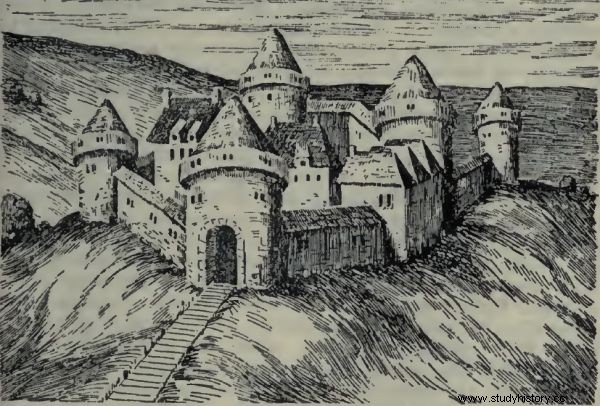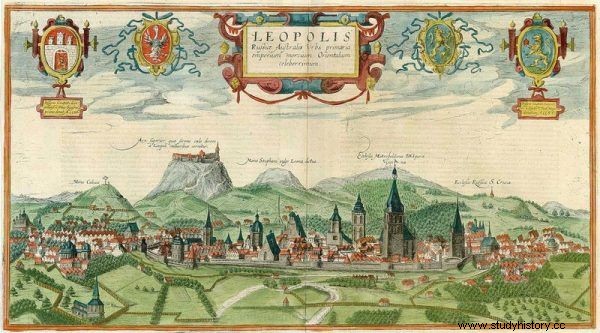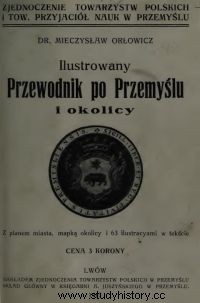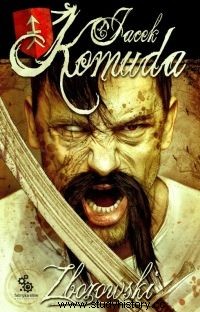The First Republic could boast a modern and original system of power (democracy pushed to the limit!), unusual local culture (oh, that Sarmatism) and a whole host of great statesmen. It would be an almost perfect country if it were not for a few minor snags. For example, almost non-stop civil wars ...
It is hard to find a better example of disrespect for the authorities and state good than the battles waged in today's Podkarpacie region. Two Przemyśl starosts - Jan Tomasz Drohojowski and Adam Stadnicki - experienced firsthand how little office meant for an arrogant nobleman. Unfortunately, they had to represent power in the land that gave birth to some of the most violent nobles in the entire Republic of Poland ...
In 1601, the Przemyśl castle hill became the arena of an open attack by a nobleman against the office of staroste - that is, against the direct representation of the king! Drohojowski, who had seen many of his brothers in his life, put many of his brothers into the tower and went on expeditions with Mr. Jan Zamoyski, ordered to roll out cannons and defend the royal justice, i.e. the Kazimierz Castle (and himself by the way). The lord the starost ordered the Sanok castellan Stanisław "the Devil" Stadnicki to be beaten to the storming the hill with all his might.
Drohojowski's adversary, with whom he waged a private war, was just a herb. This madman, a Rococo and, in addition, a promoter of Protestantism, who developed his own thread in many novels, dared to attack the Przemyśl starost not on a road or in some forest, but in the royal castle
.

This is what the Przemyśl castle looked like around 1600 (the drawing comes from the book by Mieczysław Orłowicz "An Illustrated Guide to Przemyśl and the Area").
Unfortunately, the starost was unlucky and although it is said that God carries the bullets, those from Drohojowski with greetings to the "Devil" flew straight to the Przemyśl cathedral, located ... a cannon shot from the castle. It did not end too pleasantly for the starost. The bishop reacted very nervously to the immediate threat to the temple and immediately placed a church curse on the royal official. And the explanations that the "Devil" was targeted in its own lord's person were useless! The staroste's cannoneers had to explain themselves extensively ... It was only the subsequent solid penance at the gate of the tabernacle that prompted the bishop to lift the curse.
The assault of the Przemyśl castle was only one of the episodes of a private war of the Przemyśl starost and the castellan of Sanok (yes, Stanisław Stadnicki also had his own clerk!). For years, their clashes swept across the lands between Sambor, Sanok and Przemyśl. It was not until 1608 that they ended, namely the end of the life of one of the militants. On November 19 of the same year, Drohojowski died in Przemyśl, and his successor was ... Adam Stadnicki, a relative of "the Devil".
And this starost could not quietly hold his office, keep the roads clean, judge and punish in guttural matters. In addition to serving as a defender of public order, Adam Stadnicki led a private war with Jan Szczęsny Herburt from Dobromil for many years. Of course, it was not without smoking and plundering, just like among the noble brothers. During the fights, Herburt captured the staroste's brother and locked him in a gully, and Stadnicki did not remain indebted and wreaked havoc on the adversary's goods.

This is what Lviv looked like at that time. This includes there Jan Szczęsny Herbut played (source:public domain).
He invaded and plundered the palace in Mościska, robbing the local library at the same time (it was possible to burn and destroy, but as you can see, culture had to be respected!), And then he set fire to six farms and sixteen villages. But that was not enough, after all, Mr. Jan had a relative of the staroste in his power, so Stadnicki set off to Lwów. Herburt happened to be in the city, and the Przemyśl starost gathered an army under the walls and threatened a siege if the city authorities did not hand over the lord of Dobromil. And he stood there for three weeks (in 1606). Already at the beginning of January the roles were reversed and it was the would-be prisoner of war from Lviv who played in the starost's property. On January 6, 1607, he plundered the town of Niżankowice, and the next day he was in Przemyśl.

On January 7, 1607, the Przemyśl castle was besieged by Jan Szczęsny Herburt. He went about it methodically. He amassed over 700 soldiers and a lot of cannons. He set up his artillery on Zniesienie, a few hundred meters away (one of the few hills surrounding Przemyśl), and started firing on a regular basis. Such a violation of the seat of the office? And yet! The castle tower was severely hit, and the roof looked like a sieve from then on ... However, as is well known, fortune is rolling and the fate of Jan Szczęsny Herburt has changed. He got to know the Kazimierzowski Castle from the inside, and preferably his own cell in the tower. He sat in it until he softened and humbled himself by signing the appropriate declaration.
None of the private wars of starosts helped the castle, and it was invaded more than once. In 1616, the office of Przemyśl starost was taken over by Marcin Krasicki. This well-known patron of the arts beautifully rebuilt and restored his castle in Krasiczyn, but the Przemyśl castle treated it a bit neglectfully.

... but the inspiration for its writing was a collection of short stories by Jacek Komuda entitled "Zborowski" (Fabryka Słow, 2012).
In fact, he did some renovation work, but considering the number of cannonballs bouncing off the walls and the number of storms that were repelled (also irresistible), it was difficult to restore the building to its former glory. After all, the Tatar Khan Temir the Bloody Sword and the Cossacks and Jerzy Rakoczy knocked at the city gates! even the Swedes venture here.
But it was different when the enemy from abroad attacked the royal residence. In the Republic of Poland, the biggest problem was the annual battles of the inhabitants of the country with each other. They destroyed castles, burned villages, plundered cities ... In this context, the partitions of Poland are no longer surprising. It is surprising, however, that the state that functioned in this way survived until the end of the 18th century!
Sources:
- Mieczysław Orłowicz, Illustrated guide to Przemyśl and its surroundings , Union of Polish Societies in Przemyśl, 1917.
We recommend:
For those who are interested in the Polish warlords and the arrogant nobles of that era, we recommend Jacek Komuda's novels, and especially his latest collection of short stories: Zborowski. One of the stories is set in the castle in Przemyśl.
